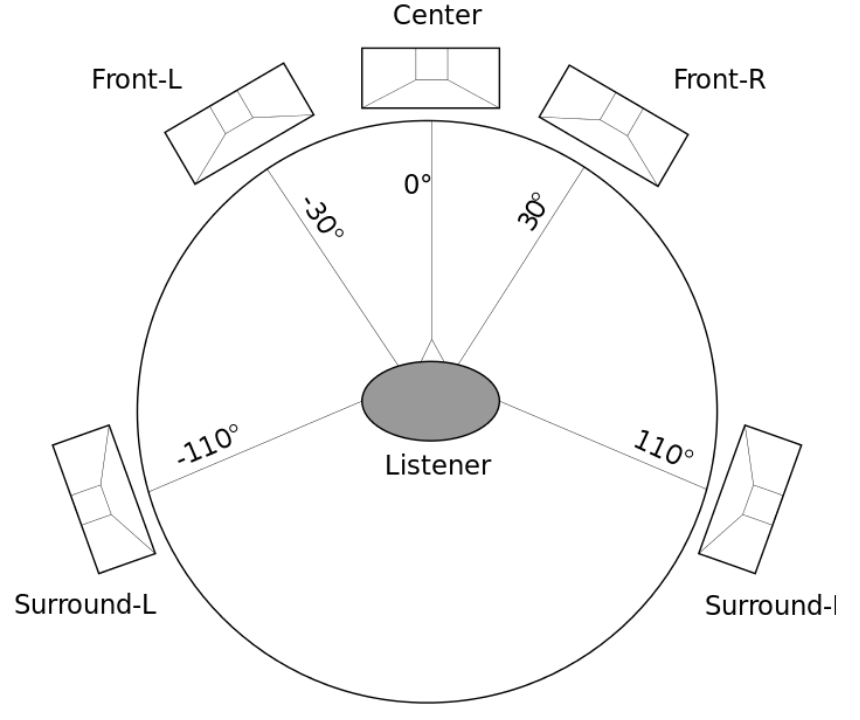Drown vs. Competitors
3D sound, HRTF, spatialized sound, object-based audio, binaural audio… There are many names for the technology that recreates 3D sound on stereo headsets. What does it all mean?!
Drown Earphones reproduce the 3D audio generated by the best modern games with pinpoint precision. We take the highly accurate 3D audio and deliver it directly through our patented waveguide to your ear canal, without alteration by reflection or refraction in the outer ear. This improves your ability to locate items and adversaries within the game.
Over the ear headphones broadcast 3D audio from a short distance away from the ear and the pinnae of each user introduce slight variations to the 3D audio. This degrades the signal and compromises the accuracy of the spatial information.
Additionally, Drown transmits the acoustic vibrations directly to the nerves in the pinnae, improving the overall audio experience. Bass sounds are improved and overall immersion is amplified.

3D Audio
Rather than relying on multiple speakers, 3D sound uses only two speakers, preferably headphones. In order to understand how this works, we need to understand how localization of audio works for people with normal hearing. Our brains figure out where audio is located by responding to, among other cues, small differences in the timing and intensity of sound arriving at our two ears. The illustration below shows these phenomena.
There are fancy names for these two main effects. The first is the difference in time between when the sound arrives in one ear versus the other. This is the interaural time difference (ITD). The other effect is the difference in sound intensity between the two ears, the interaural level difference (ILD). So for any sound situated in space the human brain figures out approximately where that audio is located by the incredibly subtle differences in when the sound arrives at our ears and how loud the sound is at each ear.
3D audio reproduces those subtle differences for every object in a scene. This requires a lot of computational power, mathematics, and sophisticated digital signal processing algorithms. For example, if a sound is over to your left, it should reach your left ear before it reaches your right ear, 3D audio will reproduce this interaural time difference.

It should also be a bit louder in your left ear than your right because your head would block the sound. 3D sound mimics this interaural level difference. To complicate all of this, the shape of your outer ear (pinna) also impacts your ability to locate sounds in space. Sound waves bounce off your outer ear into your ear canal. Every ear is different and has a unique signature. The complex shape of our outer ears results in a complex pattern of sound resonances and diffractions that filter the sound. Even small variations in the shape of the pinna will change the spectrum of the pressure entering the ear canal. Thus, the unique shape of our ears will introduce a uniquely altered sound wave into our ear canal.
Our brains can decipher the tiny changes that our pinnae introduce to the audio to help pinpoint the sound location even more accurately. If you change the shape of your pinna you will have a harder time locating where sounds are coming from. There is a mathematical function that tries to capture all the ways in which the physical shape and structure of our head and outer ears changes the sounds that reach our eardrums. The mathematical formula is called the Head Related Transfer Function (HRTF). Basically, HRTF is the way in which our head changes the sounds that reach our eardrums.
Surround Sound
Most people are already familiar with Surround Sound technology (a Sony trademark for multiple channel audio that goes beyond stereo) Surround sound uses multiple speakers positioned around the listener to mimic a real-world effect. Audio is created in separate channels for each speaker and embedded with the video or music. The diagram below shows the setup of a 5.1 system. The 5 indicates how many speakers there are and the .1 indicates the number of subwoofers.
The drawback with surround sound is that it only reproduces audio in a flat plane around the listener, as the recommended speaker setup is in a plane around the listener’s head. Here is a good source for more information on the various surround sound formats.
Comparing 3D Audio on a headset to surround sound.
Surround sound is a limited listening experience that relies on a small number of speakers to increase the sense of location delivered by multiple audio channels. The number of audio channels typically cap out at 7 speaker locations for consumer home audio. It requires specialized amplifiers to decode the multiple channels and is reliant on the speaker set up for accurate if limited audio reproduction. To be blunt, if you only have 7 speaker locations to place the sound then the incremental accuracy of the audio location will be very low.
Comparing 3D Audio to Surround Sound
3D game audio, on the other hand, delivers much more accurate location information over a stereo headset by using Head-Related Transfer Function (HRTF) algorithms to mimic the effects of the pinnae, the head, and various listening environments. The sound is funneled straight into the ear canal to produce the impression of real 3D audio sources. Headphones are the best way to get the 3D sound into your head. Speakers can’t do the job as well, because there’s no way to stop each ear hearing the sound that’s intended for the other.
